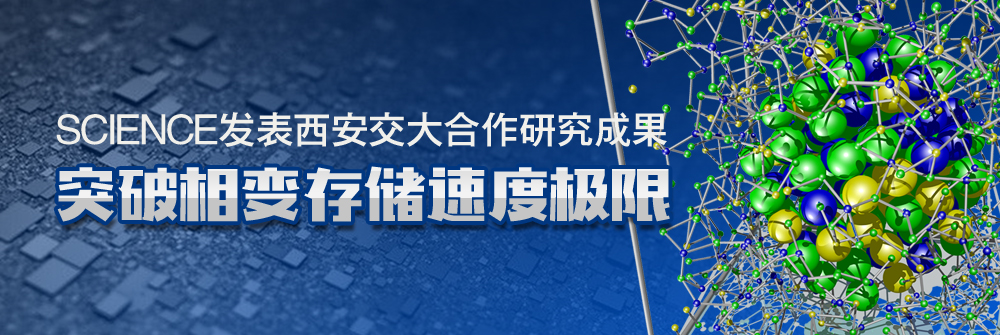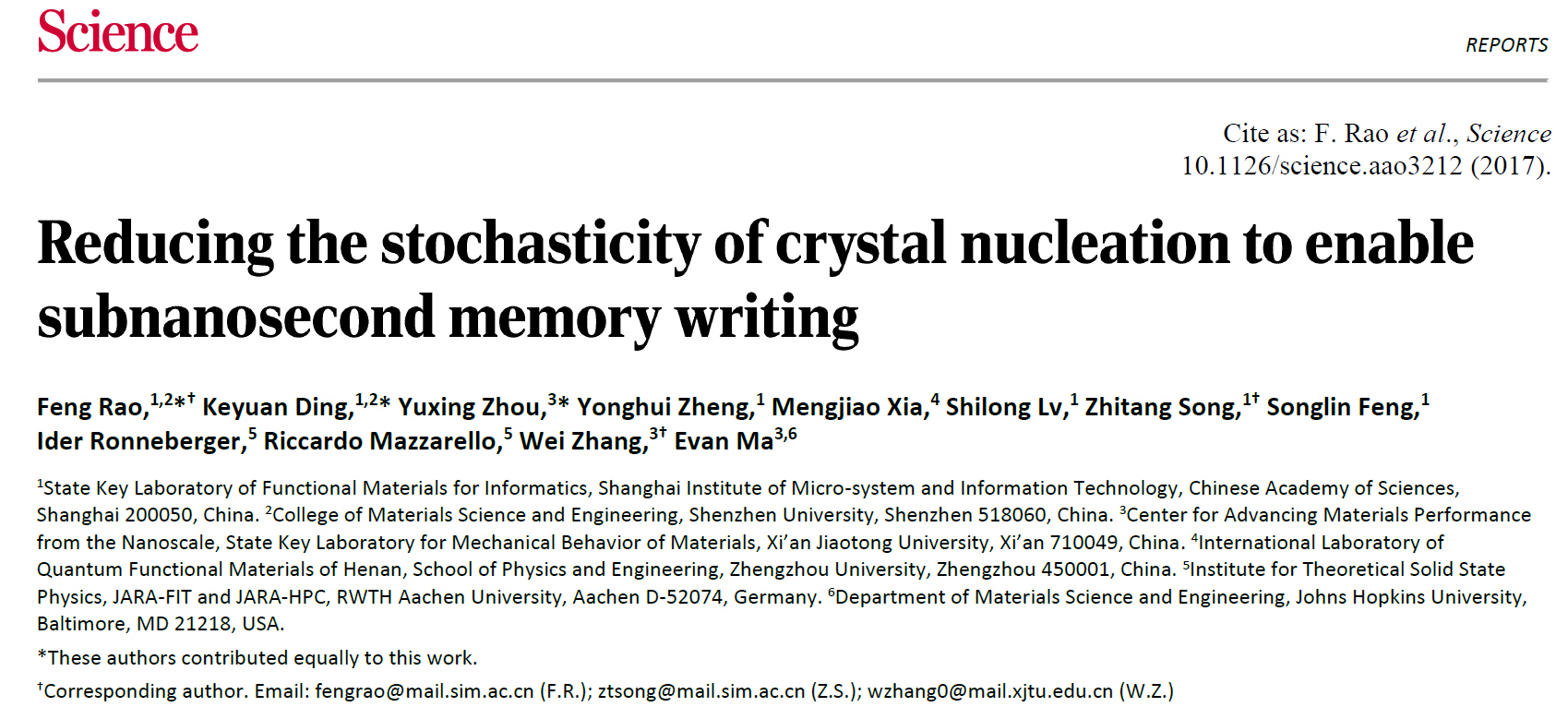
On Nov 10th, 2017, Science published a joint article by Xi’an Jiaotong University and Shanghai Institute of Micro-system and Information Technology (Chinese Academy of Sciences) -- “Reducing the stochasticity of crystal nucleation to enable sub-nanosecond memory writing”.

The explosively increasing demand of data storage and transfer is posting great challenge to current silicon-based electronic devices. In addition, the performance gap among multiple data storage and memory units, including SRAM, DRAM, solid state disk, becomes the bottleneck for further improvement of computing efficiency. Massive efforts have been undertaken to develop new data storage technology, such as non-volatile memory. Phase change random access memory (PCRAM) holds great promises for such development. The working principle of PCRAM is to exploit the pronounced electrical resistance difference between the amorphous and crystalline state of chalcogenide phase change materials (PCM), such as GeSbTe compounds, to storage information. The essential mechanism of PCRAM is that PCM can switch rapidly and reversibly between the two solid states at 500-600 K, and yet the two states can be stable at room temperature for decades. There has been breakthroughs in both simulations and experiments to uncover the origin of the fast crystallization phenomenon in PCM, providing a very good opportunity to tackle the most challenging question – how to understand and manipulate the crystal nucleation process of PCM, which is the bottleneck of PCRAM performance in terms of writing speed.

The memory writing performance (only 0.7 ns) and microscopic origin of the new SST phase change device.
To break such technology barrier, scientists from
Xi’an Jiaotong University and Shanghai Institute of Micro-system and Information Technology
work together, and come up with an effective material screening protocol to
design new PCMs with tunable crystallization properties. A new material, ScSbTe,
is singled out for thorough performance tests. Indeed, the phase change device
made of this new PCM allows a speed of only 0.7 nanosecond for the writing
process, which is one order of magnitude faster than the conventional GeSbTe
based devices. Such acceleration is achieved by reducing the stochasticity of
crystal nucleation through geometrically matched and robust ScTe chemical bonds.
This new material opens up the possibility to compete with cache-type memory
using PCRAM. This work was published in Science on Nov 10th 2017. The
full article can be accessed with the following link:
http://science.sciencemag.org/content/early/2017/11/08/science.aao3212


